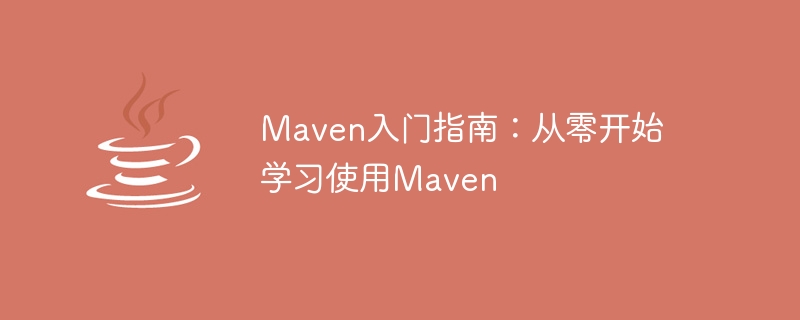

Maven is a widely used project construction, dependency management and automated build tool in Java development. Its advantage is that it simplifies the project management and construction process and improves the work efficiency of developers. This article will introduce the basic concepts and usage of Maven from scratch to help readers quickly get started and master the use of Maven.
1. What is Maven
Maven is an open source project of the Apache Software Foundation. It provides a standardized project structure and a set of dependency management methods. It can automatically Download the required dependency packages, and build and manage the project through the command line or IDE plug-in. Maven manages, publishes and obtains dependency packages through the central repository (Maven Central Repository), which allows developers to easily obtain and share various Java libraries and frameworks.
2. Maven installation
You can download the latest Maven from the Maven official website (https://maven.apache.org) Stable version, choose the binary compression package suitable for your operating system.
Extract the downloaded compressed package to any directory. This directory becomes the Maven installation directory.
Add Maven's bin directory path to the system's environment variable PATH, so that you can use Maven commands on the command line.
Enter the mvn -v command on the command line. If the Maven version information can be displayed correctly, the installation is successful.
3. Basic concepts of Maven
POM is the most basic configuration file in the Maven project , which uses XML format to define the basic information of the project, dependent packages, build scripts, etc. In the root directory of the project, you can find a file called pom.xml.
Maven uses coordinates to uniquely identify a project or a dependent library. The coordinates consist of groupId, artifactId and version. Through coordinates, Maven can automatically download the required dependency packages.
Dependencies refer to the external libraries or modules that the project depends on, which can be managed by declaring them in the dependencies tag in the POM file.
The warehouse is a place used to store dependent packages. Maven has a local warehouse and a central warehouse. The local warehouse is used to store dependency packages downloaded during project development. The central warehouse is a public warehouse that contains a large number of commonly used open source Java libraries and frameworks.
4. Common Maven commands
Clean the project and delete the temporary files and directories generated during the build process.
Compile the project and compile the Java source code into bytecode.
Run the test case.
Package the project and generate a distributable project package (such as JAR, WAR).
Install the project to the local warehouse so that it can be automatically downloaded when other projects depend on it.
Deploy the project to a remote server for others to use.
6. Commonly used plug-ins for Maven
Maven provides a large number of plug-ins that can extend Maven's functions.
is used to compile Java code.
is used to run test cases.
Used to generate the distribution package of the project.
is used to build and run Spring Boot applications.
7. Use Maven to build the project
Execute the mvn archetype:generate command in the command line, and you can select the appropriate project according to the prompts Template, enter the project coordinates and other project information to create a new Maven project.
Add the required dependency package coordinates in the dependencies tag of pom.xml. After saving the file, Maven will automatically download these Dependency packages to local repository.
Execute the mvn command in the project root directory, and add different commands and parameters as needed, such as mvn clean, mvn compile, etc.
Executing the mvn package command will generate the project's build product in the target directory.
8. Summary
Through the introduction of this article, readers can understand the basic concepts and usage of Maven. Maven provides powerful project management and construction functions, which can greatly improve development efficiency. I hope readers can master the use of Maven through learning and practice, so as to better apply it to their own projects.
The above is the detailed content of Basic Guide to Learning Maven: Mastering the Use of Maven from Scratch. For more information, please follow other related articles on the PHP Chinese website!